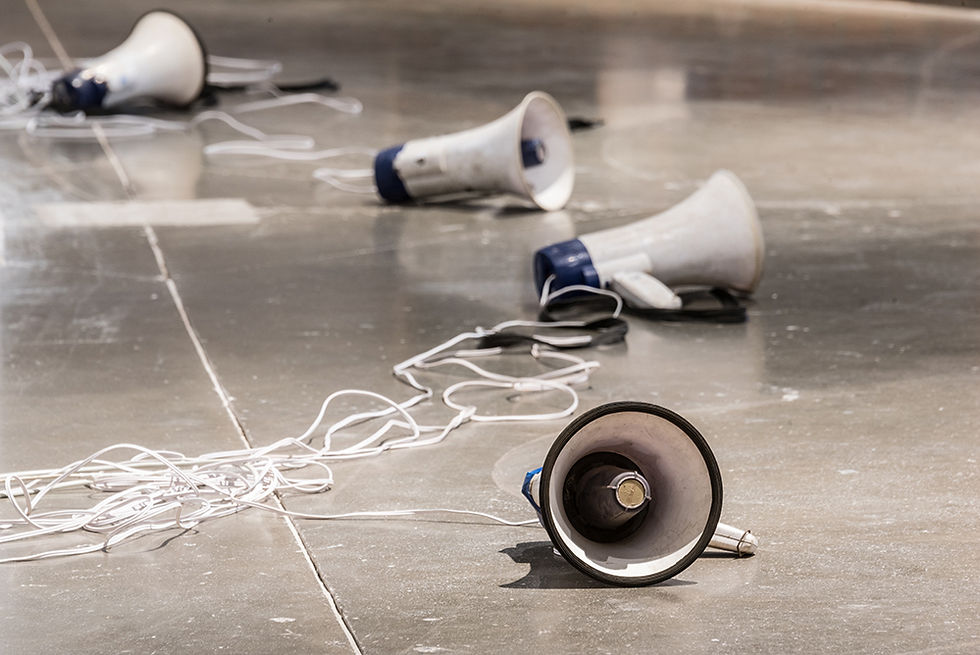
UNTITLED (MEGAPHONES), 2014
Sound installation
Variable dimension
Sound as a marker of place that creates occasionally misleading associations with minimal means is often used as an artistic medium by Baba-Ali. In this work, megaphones arranged on the floor of the exhibition space reproduce the sounds of street trade recorded by the artist in Dakar, the capital of Senegal. Each megaphone broadcasts just one voice, but the cacophony created by them, immersing the viewer in the atmosphere of a distant and probably unfamiliar city, along with the impenetrability not only of the speech but also the unrecognisable language (almost 40 languages are spoken in Senegal, whether introduced by colonisers or local), return the viewer to the material reality of the sound reproducers themselves – Chinese-made megaphones.
Baba-Ali often makes use of mass material culture in his practice, employing its products as ready-mades. The artist, member of a generation that knew nothing of the world prior to the rapid development of globalisation (and, therefore, the growth of the global market), accurately captures and ironically reveals the contradictions of our world, discernable even in the most trivial aspects of everyday life. Baba-Ali analyses the mechanisms by which national cultures adapt to the realities of globalisation and the cultural mutations it causes, because objects as well as people are rapidly changing their places and contexts in the global world. Thus, whether observing the way of life of various diasporas in Belgium or penetrating the attributes of the European way of life in the Maghreb, the artist emphasises the erosion of identity seen in modern man and his "place", and the obsolescence of the geopolitical North-South divide. The sounds of the market in Dakar, reproduced here in Moscow, constitute a kind of testing of our sense of reality.
The apparent simplicity of technique in Baba-Ali's works is deceptive. For him, any mass produced object is already the bearer of certain geopolitical codes associated with the functioning of the global economy. So, in Megaphones, the artist's attention to the local context combined with analysis of the global picture leaves open the question of who exactly is the main "hero" of the work. After all, the artist has essentially combined in one stunt the phenomenon of Chinese migration into Senegal, the local traders whose archaic approach to trade makes such a contrast with the world of global e-commerce, and the direct producers of cheap Chinese goods, for whom the free movement of labour promised by globalisation has only become another wave of capitalist colonisation.
Text by Anna Zhurba